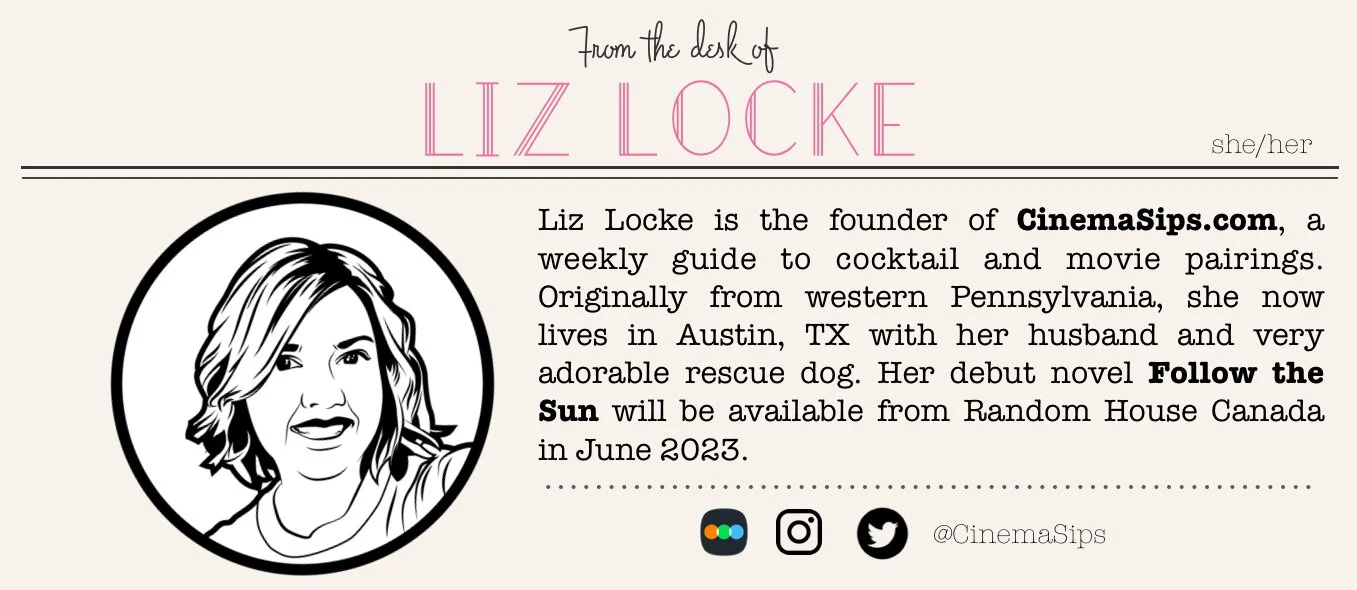Forbidden Cocktails and the Films of Hollywood’s Pre-Code Era
FORBIDDEN COCKTAILS: Libations Inspired by the World of Pre-Code Hollywood
Written by André Darlington
Published by Running Press
Available for purchase here
by Liz Locke, Cinemasips.com
If you enjoy exotic locales, beautiful costumes, strong female characters, and even stronger drinks, then pre-code films are sure to be right up your alley. I first discovered this glorious collection of pictures made between 1930-1934 at the Turner Classic Movies Fest, so it seems fitting that TCM + Running Press would be the ones to publish André Darlington’s latest cocktail pairing book, Forbidden Cocktails: Libations Inspired by the World of Pre-Code Hollywood. Having been a fan of Darlington’s since his popular 2018 release Booze & Vinyl, I knew this new work would feature accessible recipes and insightful descriptions of the featured pre-code films. Happily, I can confirm it does both.
In the forward by Mark A. Vieira, the reader is given a useful history lesson on the political and sociological context of this era. America was suffering through Prohibition and the Great Depression, so Hollywood wanted to take everyone’s mind off their troubles with escapist and entertaining fare. If you’ve ever watched a film from the early-1930s, you know what that means: adultery, polyamory, drug use, murder, and various other “sins”, all under the backdrop of sequined gowns and chilled coupe glasses. As a lifelong lover of soap operas, the pre-codes appeal to my love of crazy plots and glamorous outfits. Think Dallas, with fedoras instead of cowboy hats. Although there was technically a production code in place, Hollywood chose to ignore it during these four years. The results are films that feel fresh and modern nearly a hundred years later.
Because Prohibition wasn’t repealed until the end of 1933, these movies often feature characters imbibing in foreign countries and on cruise ships. Such is the case for the film I chose to watch this week, Shanghai Express, which Darlington pairs with a “Shanghai Lily”. The drink gets its name from Marlene Dietrich’s character, a courtesan taken hostage on a train in China, along with a fellow prostitute (played by Anna May Wong) and her brain surgeon ex-lover. See what I mean about crazy plots? Even the drink is pretty wild, mixing rum, lemon juice, absinthe, crème de menthe, and vanilla syrup, but von Sternberg’s film makes me feel adventurous and daring; I’m willing to risk a weird flavor combination. Happily, it’s a very tasty concoction, and not one I would have ever put together without Darlington’s guidance.
As for the rest of the cocktails, I’m delighted to see some inventive takes on movies I’ve previously covered on my own blog Cinema Sips. Of note is the “It Happened One Morning” pairing for It Happened One Night, which features a coffee cocktail complete with dunkable donut garnish! Honestly, it puts my “Bitter Heiress” cocktail to shame.
My only caveat with this book is that although it will introduce you to some wonderful films, sadly you might not be able to access all of them. Many are not available on typical streaming platforms, though you may be able to find them on YouTube or Archive.org if you’re not picky about the quality. I suppose Forbidden Cocktails makes the case for collecting physical media because some picks are in the Criterion Collection (which is how I viewed Shanghai Express), but not nearly enough of them. If you’re the type of person who enjoys going to your preferred streaming rental site and typing in the name of whatever you want, whenever you want, just know you probably won’t find these movies there. I assume they’ll hit the TCM schedule at some point, but as a millennial who cut the cord years ago, this does me no good. Nevertheless, if you’re already a collector of pre-code films, this book is a fantastic companion piece. If you aren’t already a collector, Forbidden Cocktails will make you want to become one. Cheers!



